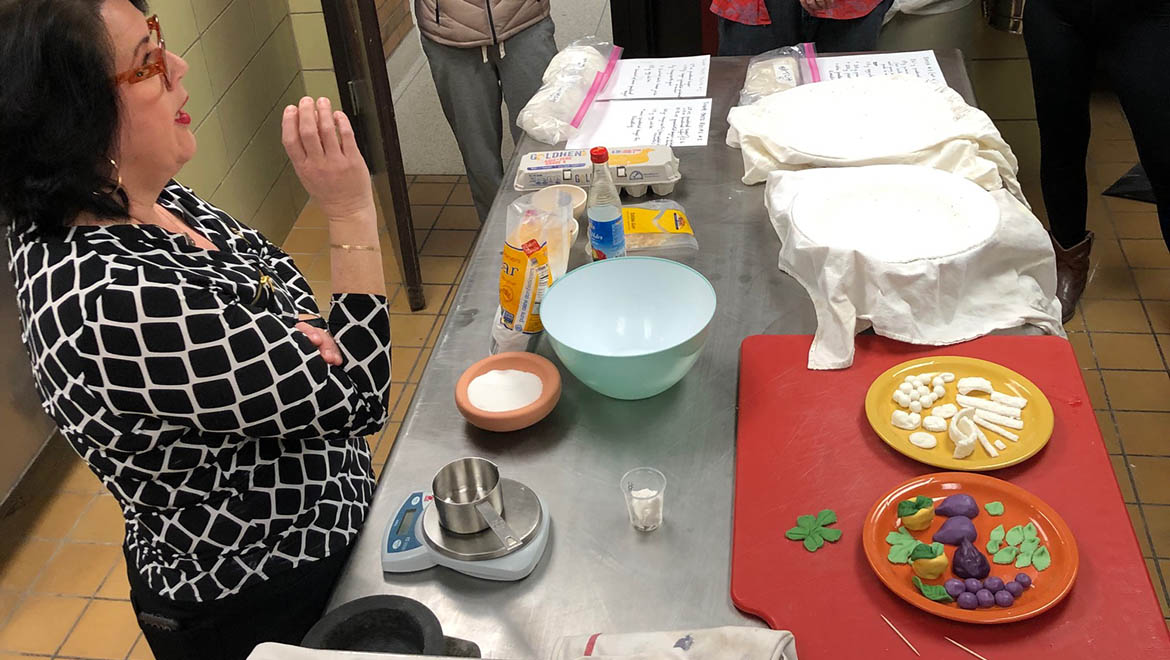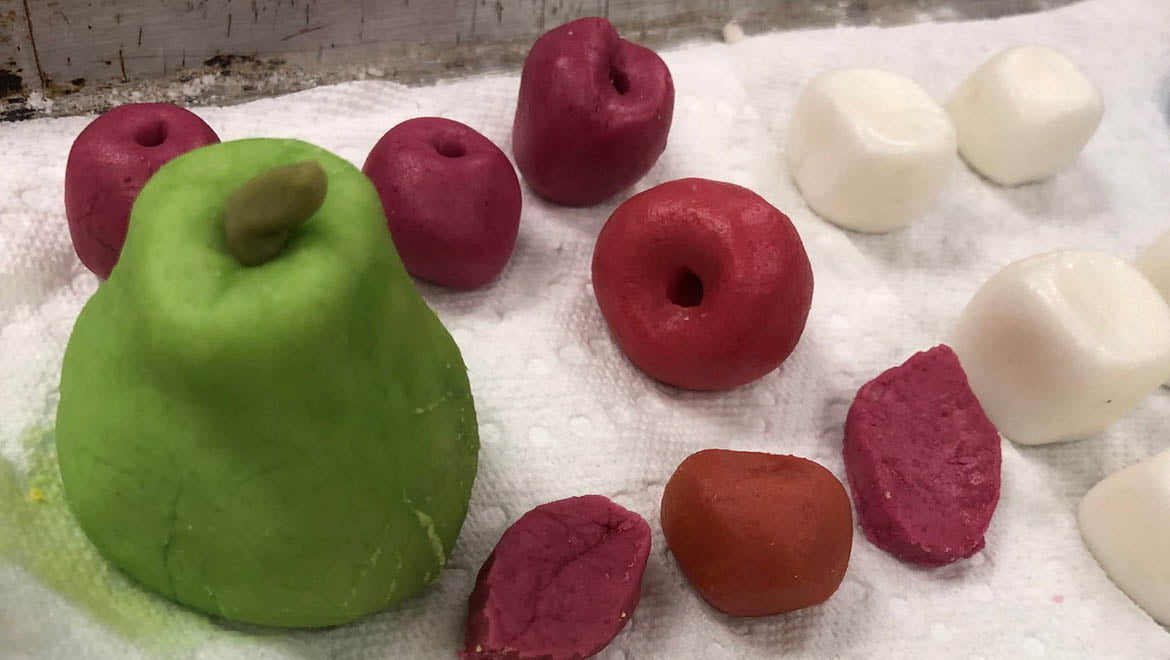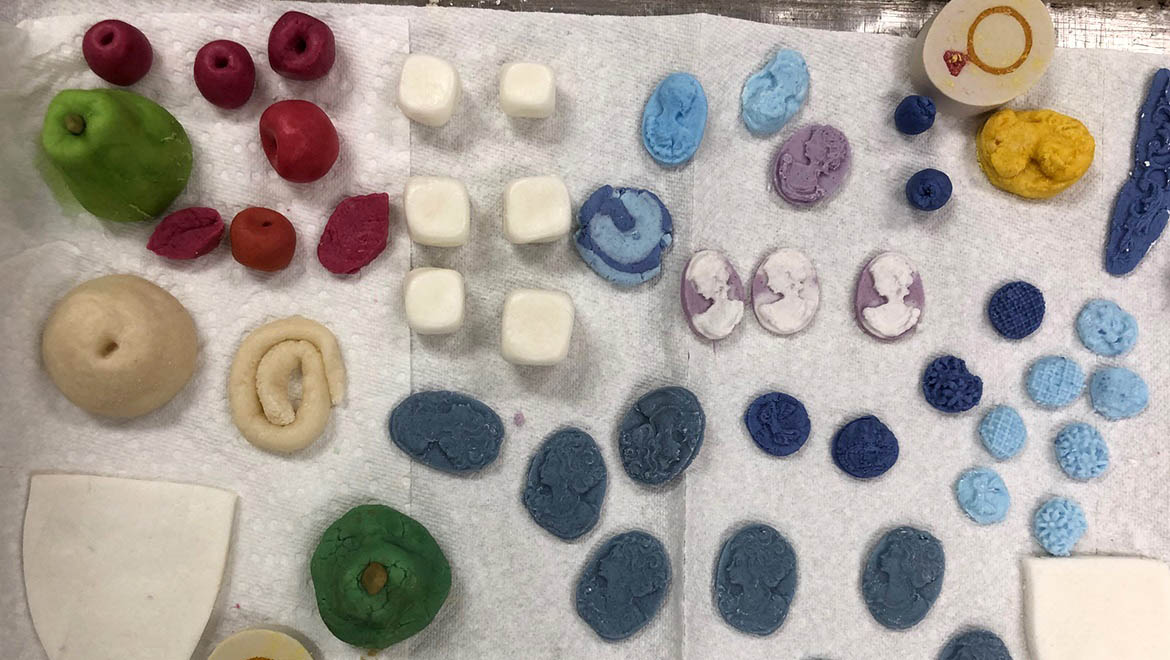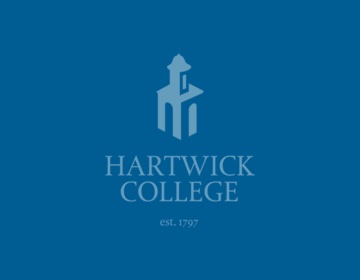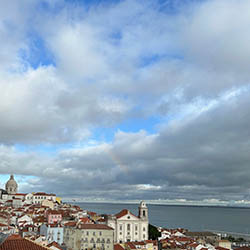Terry-Fritsch visited Hartwick to work with ceramics students and deliver her lecture, “Partying in the Renaissance,” which is one small part of a larger project on art, food, and conviviality in Renaissance Italy.
“The project began when I was invited to be part of an international collaboration on ‘The Politics of Iconoclasm’ through the Warburg Institute and German Historical Institute in London,” she said. “I had worked on many facets of violence and iconoclasm before, so I knew that for this new project, I wanted to push the boundaries of thinking about images and their destruction.”
She had long been fascinated by the sugar sculptures pictured in paintings of the wedding banquet, and reached out to Rozene to help her with one aspect of the project.
“I wanted to bring in Stephanie to help me better understand the material properties of this sugar paste,” said Terry-Fritsch. “It’s experiential archeology, understanding what the labor for this kind of work looked like.”
Last October, Rozene joined Terry-Fritsch at Bowling Green to begin trying to recreate the sugar paste, working with recipes from the 15th and 16th centuries.
The recipes, they found, needed some modern updates.
“They’d call for a walnut shell of lemon juice,” said Rozene. “So we got a walnut shell and figured out what that translated to. The water content in egg yolks varies, and an ounce of sugar in the 15th century is different from an ounce of sugar now. We’re learning the most through failure.”
There were two types of sugar paste; a sturdier one for serving utensils and dinnerware, and a softer one for more edible items, such as sculpted fruit or flowers.
“What excited me was how Stephanie, as a ceramics artist, would describe the feel of each batch,” said Terry-Fritsch. “Some, she said, felt like terra cotta, others felt like porcelain.”
Using the catering kitchen in Hartwick’s Anderson Center for the Arts as their studio, students mixed up batches of the sugar paste and used it to make small fruits, pearls, and cameo medallions.

